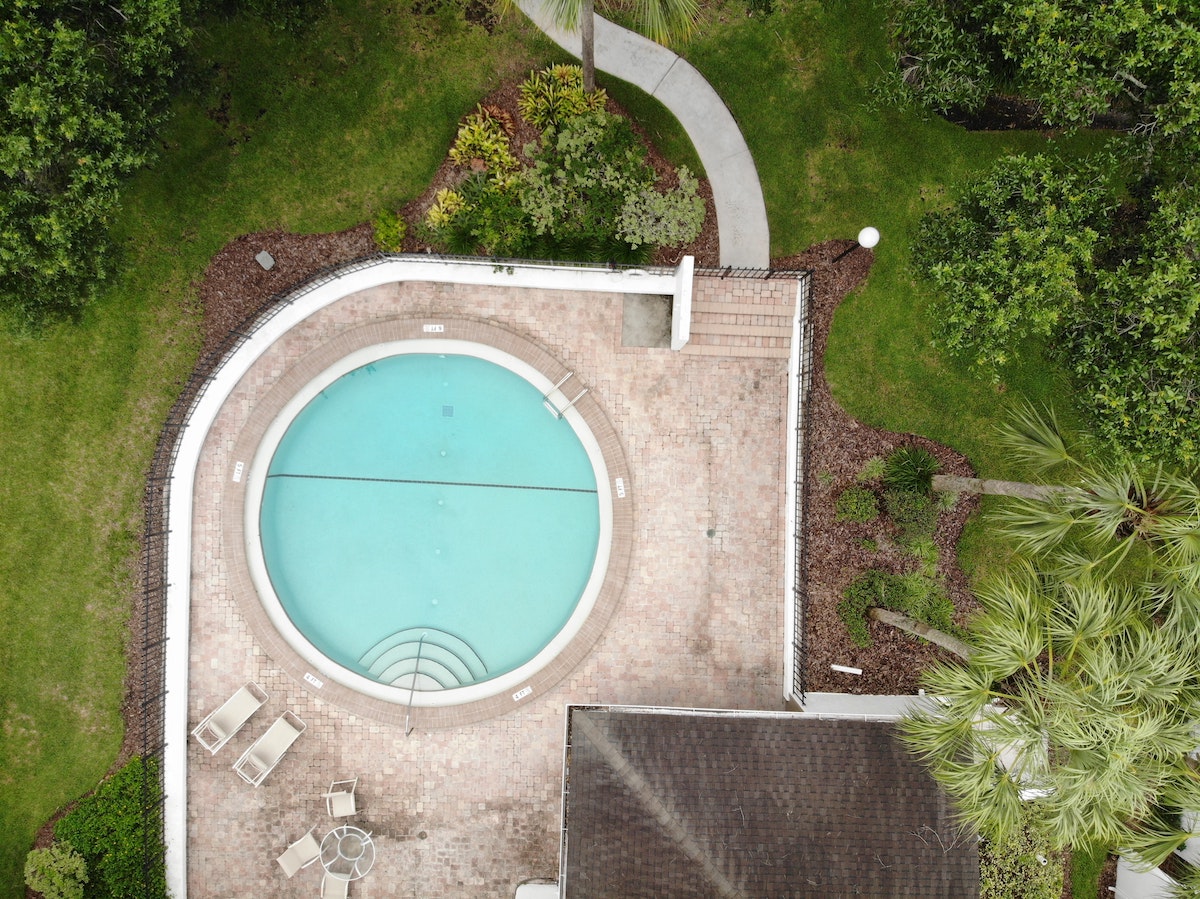
Residential pool design guidelines call for a once turnover of water in a 24 hour period as the minimum standard for circulation.
For instance, if you have a 560 square foot pool holding about 20k gallons, your pump (and filter) must be able to turn over 20,000 gallons in 8 hours or 2500 gallons per hour or about 42 gallons per minute as the absolute permitted minimum. Ignoring published minimums it has become common practice to design for a twice turnover of water in that same 8 hour period, in the above case calling for 83 gallons per minute flow rate. At 12 hours per day of filtering the above example would only need 28 gpm flow for a once and 56 gpm flow for a twice turnover of water.
All these facts are relative to the pool that is being designed or SPEC’d (Swimming Pool Energy Consumption) and some exceptionally efficient pool designs will be well suited to stick to the published minimums. With a flow rate of about 85 GPM which can be coaxed out of a ½ hp pump with good pipe and manifold design, our sample pool need only run 4 hours per day on ½ HP to achieve the desired filtration specification! As far as pools go, this configuration will literally sip the electricity off the grid and will be hardly noticeable in the grand scheme of things. On average, this pool will consume about 1/10th of the electricity of a similar pool using a 2hp pump running 8-10 hours per day! If you knew you could run a pool on less than 100 dollars worth of electricity per seasons use, how many more people would then seriously consider adding a pool to their American Dream. How many pool companies would be able to increase sales? How many new high flow low horsepower replacement pumps do you think we would all be able to sell?
All these facts are relative to the pool that is being designed or diagnosed. When sizing a pump one must take into consideration pool size in gallons, number of hours per day that the filter will run, and the amount of head pressure loss for the pool which can be calculated by adding all the linear feet of 1.5 and 2 inch pipe, numbers of elbows and fittings of each type, and knowing the values of head pressure loss in feet for all the valves, filters, skimmers, returns, cleaners, check valves, pipe, fittings and multiport valves! Sounds daunting doesn’t it? In most cases a SWAG (scientific wild ass guess) based estimate of head pressure loss will have to do. We find that using an average figure of 20 to 30 feet of head pressure loss yields acceptable results when it comes to sizing a pump and filter combination. These values may increase to 40 feet of head when a roof-mounted solar heating system is in use. Precise values are difficult if not impossible to determine.


